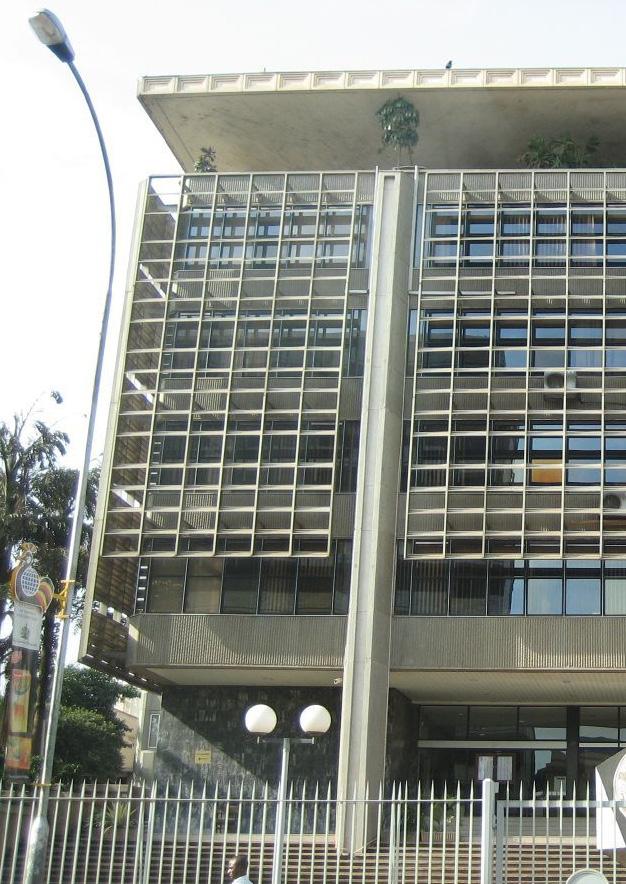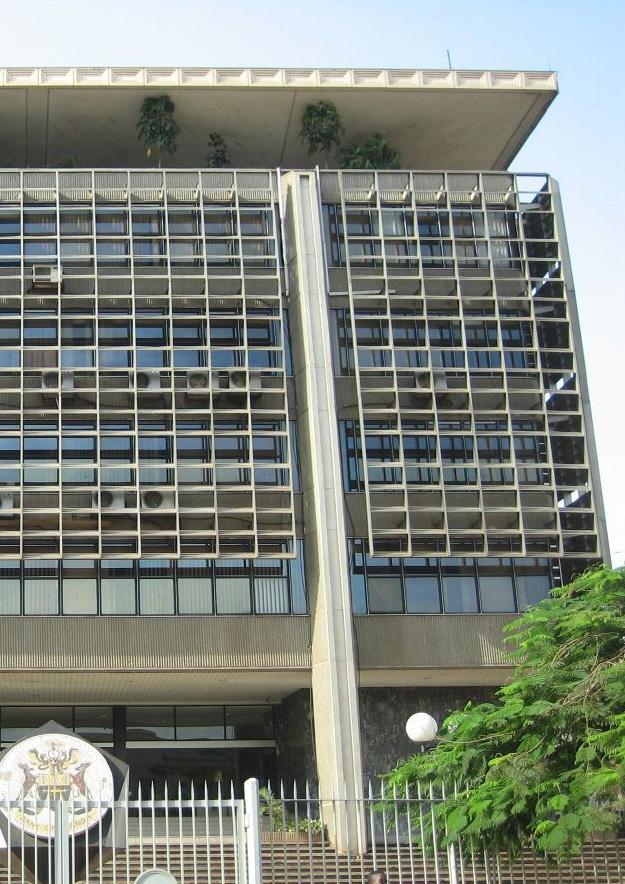
8 minute read
Credit Risk Management Amidst The COVID 19 Pandemic: A Glance At The Financial Sector In Uganda.
The Risk Echo
The Covid-19 pandemic has caused a great challenge to the global economy. In Uganda the effects have been horrendous across the entire economy, but in this article, I will restrict myself to the financial sector, specifically looking at how Covid-19 has affected credit and escalated credit risk.
Not until March 2020, when the first case of Covid-19 was reported in Uganda, Ugandans were only reading and watching stories about Covid-19 in other countries. Thereafter, Covid-19 cases became prevalent in the country, which compelled the government to institute stricter containment measures such as curfew from 19:00 hours to 06:30 hours and a ban on both private and public transport, except for essential services such as medical, telecommunication, food distribution, banking, etc.
As a result of the lockdown measures, many organizations retrenched some of their staff and also closed operational branches in order to reduce costs; while a number of other business, especially small enterprises, collapsed. Bank customers in the retail/ personal banking sector were significantly impacted, since their sources of cash flows were no more. But the most affected sectors of the economy have been tourism, hospitality, transport and education; schools have been closed for nearly two years. The 17th Uganda Economic Update (UEU), in a theme “From crisis to Green Resilient Growth: Investing in Sustainable Land Management and Climate- Smart Agriculture”, says that the Covid-19 shock caused a sharp contraction of the economy to its slowest pace in three decades. Household incomes fell when firms were closed and jobs were lost.
Many banks have had to explore more creative ways of managing the risks that arose from the effects of the Covid-19, which distorted the usual operations of businesses. Among the many risks that impacts the financial sector is credit risk, which is the focus of this article.
Credit risk
Credit risk is the possibility of a loss resulting from a borrower’s failure to repay a loan or meet contractual obligations. Put differently, credit risk refers to the risk that a lender may not receive the owed principal and interest, which results in an interruption of cash flows and increased costs for collection.
For most banks, loans are the largest and most obvious source of credit risk; however, other sources of credit risk exist throughout the activities of a bank, including the trading book, and both on and off balance sheet items.
Brenda N. Lanyero MBA, BCOM
Relationship Manager, Personal Banking, Bank Of Africa



Banks also face credit risk (or counterparty risk) in various financial instruments including acceptances, interbank transactions, trade financing, foreign exchange transactions, forwards, futures, swaps, bonds, options, and in the extension of commitments and guarantees, and the settlement of other transactions.
Covid-19 has increased the likelihood that borrowers may default, and in some cases many have actually defaulted.
Although existing models are able to measure credit risk to a reasonable degree, less frequent but impactful events like Covid-19, are difficult to model.
According to Herrings (1999), Credit risk and financial stability, although recent advances in modelling credit risk perform well with high frequency hazards, they are ill equipped to deal with the low-frequency, high-severity events that are likely to be the most serious threat to financial stability. Credit risk is the largest risk for any financial institution, and if it is not managed well, it can lead to the collapse of the financial institution. As a matter of fact, banks such as Afribank, Mainstreet Bank, Bank PHB and Spring Bank, all from Nigeria, failed due to ineffective credit risk management prior the Covid-19 pandemic. All the failed banks had exceeded their credit ceilings through unauthorized lending and other micro-financial credit risk abuse, according to Ugoan (2012), Poor Credit Risk Management and Bank Failures in Nigeria.
According to the Basel Committee on Banking Supervision, Working Paper No.13- Bank failures in mature economies, Nippon Credit Bank (NCB), a Japanese bank, failed in December 1998. NCB was an internationally active bank, with assets of Y15 trillion (as of September 1996).
It was heavily exposed to real estate related industries and was suffering from large amounts of NPLs by the time it collapsed.
The number of banks that have collapsed due to ineffective risk management cannot be enumerated exhaustively here, however, it is important to add that the global financial crisis of 2008 was triggered by defaulters on mortgage backed securities (MBS). With the concept of securitization of loans (“Generate and distribute”), banks transferred the risk of default to the investors (buyers of MBSs), and as a result, the banks relaxed their credit policies, which resulted in lending to subprime borrowers.
When interest rates increased in the USA, the subprime borrowers started defaulting, creating cash flow problems to the investors, and thus making them (investors) default on their credit obligations with their bankers, and consequently creating a liquidity crisis in the banking sector. This led to the collapse of Lehman Brothers, the largest bank then in the USA (and the world), which exacerbated the crisis.
ISSUE FOUR|JAN 22
The Risk Echo
According to the Central Bank of Uganda, loans are mainly classified into categories below;
1 day – 29 Days (Normal Loans)
30 Days – 89 Days (Watch Loans)
90 Days – 180 Days (Substandard Loans)
180 Days – 365 Days (Doubtful Loans)
After 365 Days – Loans are classified under loss.
According to the BOU Annual Supervision report 2020 and the quarterly report for the quarter ended 30/09/2021, the industry Non-performing assets/loans (NPA/NPL) in the banking sector increased from 4.9% in commercial banks in the pre-Covid-19 period to 5.3% in 2020/21.
The ratio in credit institutions increased from 3.6% to 8.1%, and in the MDIs (Microfinance Deposit-Taking Institutions) the NPL ratio increased from 3.6% in 2019 to 6.3% in 2021. The increase was mainly attributed to the effects of Covid-19 that compromised many borrowers’ ability to repay the loans.
The main sectors contributing to the majority of the NPLs were Trade and Commerce, Manufacturing and Building, Construction and Real Estate.
The total bad debts written off in the entire banking sector increased from UGX 165.2bn (Pre-Covid-19) to UGX 242.6bn during Covid-19.
During the Covid-19 era, the banking sector has experienced a decline in credit, mainly attributed to the banks’ conscious lending, coupled with low propensity to borrow by the businesses and individuals, due to the uncertainty caused by Covid-19 pandemic.
How banks responded to escalating credit risk
In addition to cautious lending, as a way of responding to credit risk in the Covid-19 era, financial institutions applied the IFRS9 standard in the measurement and recognition of financial assets (bank loans) and financial liabilities (accounts).
Unfortunately, the NPL position was worsened by the application of the forward looking

IFRS9 (International Financial Reporting Stnadrd9), that requires an entity to assess the probability of default onset (at generation of the loan). Traditionally, under IAS 39, provisions were made after granting of the loan- during the tenure of the loan, based on past events. The application of the IFRS 9 in the context of Covid19 meant that, nearly for each loan, a relatively large provision had to be made.
IFRS9 specifies how an entity should classify and measure financial assets, financial liabilities, and some contracts to buy or sell non-financial items. IFRS 9 requires an entity to recognize a financial asset or a financial liability in its statement of financial position when it becomes party to the contractual provisions of the instrument.
Provisions were set aside to prepare against possible losses, especially on the portfolios which were most impacted. Portfolios under the education sector, hotel and industry, transport, real estate, Micro and Small Enterprises (Informal Sector), were most affected. Funds were therefore, taken off the banks’ profit and loss accounts, and credited onto the provisions accounts, to prepare for future losses. Under the retail sector, where customers lost jobs without any tangible repayment plans, 100% provisions were passed to prepare for the possible losses.
Due to increased uncertainty and high possibility of default as a result of Covid-19, financial institutions instituted stricter credit monitoring measures to minimize losses arising from customer default. The measures included carrying out cash flow trend analysis for the accounts in order to come up with viable solutions. More proactive rather than reactive credit risk management measures were applied. Customers under the Small and Medium Enterprise (SME) as well as Co-operates were visited to ascertain cash flows in the midst of the pandemic, to guide decision making.
On their part, some customers opted to sell their properties under private arrangements in order to meet their loan obligations, so as not to accrue a lot of interest on loan facilities.
For employees in the retail segment that had been laid off as a result of the pandemic, the Credit Life Insurance policy came in handy, since these facilities were covered. Borrowers under personal markets pay a credit protection fee of 2% of the borrowed amount to cater for eventualities of loss.
Austerity measures
In bid to support the financial institutions manage the escalating bad debts, the Central Bank allowed the financial institutions to restructure any loan affected by the Covid-19 pandemic, as long as this was done within one-year period, effective 01 April 2020. Within this period, borrowers were eligible to have their loans restructured up to two (2) times, and further restructuring could be applied for and approved by the Bank of Uganda. Any credit relief was to be given at the discretion of the financial institutions. Financial institutions restructured almost half (50%) of their respective portfolios in order for the loans not to go bad, as guided by the Central Bank.
Conclusion
Credit risk is likely to remain a big challenge to financial and credit institutions because of the long-term effect of Covid-19 on individuals and businesses as well. NPLs are likely to remain high for a long period of time, as the volatile business environment persists. Financial and credit institutions are likely to be more cautious and extremely selective in their lending.
UGX 242.6Bn
total bad debts written off in the entire banking sector across the year. This increased from UGX 165.2bn (Pre-Covid-19)
~50%
of bank loans were restructured by financial institutions as advised by the Central Bank










